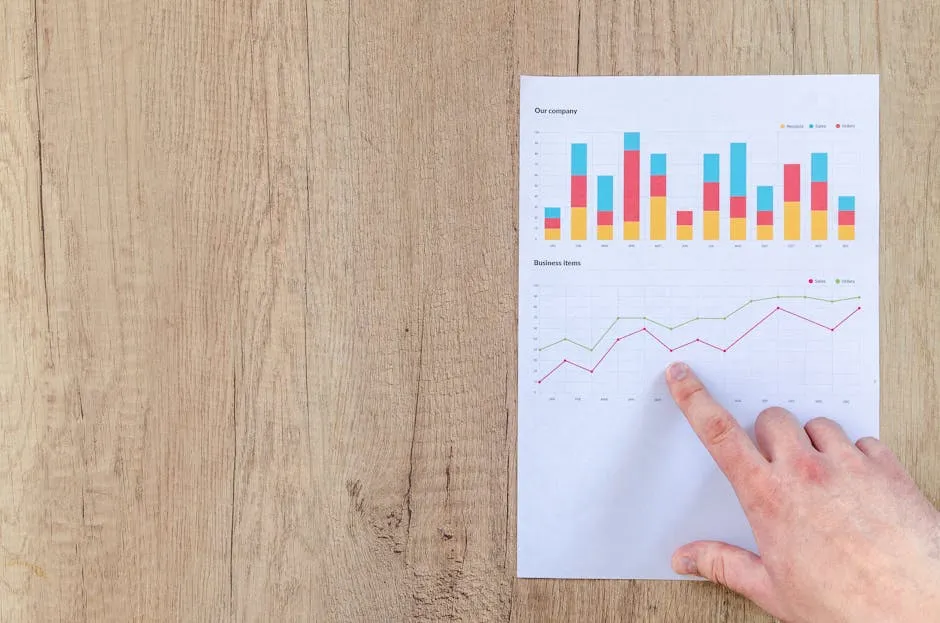Introduction
ChatGPT’s Advanced Data Analysis (ADA) feature revolutionizes how you handle data. This tool simplifies analysis, making complex tasks more efficient. Imagine saving hours on data work! It’s perfect for data analysts, business professionals, and students eager to enhance their data skills.
If you’re looking to deepen your understanding of data analysis, consider picking up Python for Data Analysis by Wes McKinney. This book is a treasure trove for anyone wanting to learn how to manipulate and analyze data efficiently using Python.
Summary and Overview
Advanced Data Analysis allows direct data uploads for deeper insights. Unlike its predecessor, Code Interpreter, ADA offers improved functionality. You can analyze, visualize, and validate data seamlessly. This tool empowers users with varying technical skills, making data analysis accessible to everyone.
If you’re diving into the world of data science, Data Science for Business by Foster Provost and Tom Fawcett is a must-read. It provides a comprehensive overview of data science techniques and their practical applications in business settings.

What is ChatGPT’s Advanced Data Analysis?
Overview of ADA
Advanced Data Analysis (ADA) is a feature within ChatGPT designed to enhance data handling capabilities. It evolved from the earlier Code Interpreter, broadening its scope and usability. The primary purpose of ADA is to simplify tasks like data exploration, cleaning, and visualization.
One key feature is the ability to run Python scripts directly within the chat interface. You can upload various file types, including CSV and TXT, and ADA will assist with analysis and visualization. This makes it an invaluable tool for anyone working with data, regardless of their coding expertise.
ADA also emphasizes user-friendliness. You can perform complex data manipulations using simple, natural language queries. No more deciphering code! With this feature, anyone can leverage AI tools to draw meaningful insights from their data.
Speaking of data manipulation, if you want a solid foundation in data warehousing, check out The Data Warehouse Toolkit by Ralph Kimball. It’s an essential guide for anyone looking to master data warehousing concepts.
In summary, ADA is a significant advancement in AI data analysis, combining powerful features with accessibility. As it continues to evolve, it promises to reshape how we approach data tasks in our daily lives.

Key Features of Advanced Data Analysis
Enhanced Data Visualization
One of the standout features of ChatGPT’s Advanced Data Analysis is its ability to create engaging visual representations. Users can generate scatter plots, bar charts, line graphs, and heatmaps. These graphical data representations simplify complex information, making it easier to spot trends and patterns. By visualizing data, you can quickly understand relationships, identify anomalies, and communicate insights effectively. This enhancement streamlines the decision-making process, allowing you to focus on what truly matters.
To further enhance your data visualization skills, consider Data Visualization: A Practical Introduction by Kieran Healy. This book will guide you through the principles of effective data visualization.

Support for Multiple File Formats
Advanced Data Analysis supports an impressive range of file formats. You can upload CSV, TXT, JSON, and even image files like JPG or PNG. This versatility enhances usability, as it allows you to work with various data types without hassle. Whether you’re analyzing structured data like spreadsheets or unstructured content such as text documents, ADA accommodates your needs. This file compatibility ensures that you can seamlessly integrate your existing datasets into your analysis process.
Natural Language Processing for Data Manipulation
Another powerful feature of ADA is its use of natural language processing (NLP). With NLP, you can manipulate data using simple conversational commands. For instance, you can ask, “Show me the average sales for last quarter,” or “Filter out entries with missing values.” This intuitive approach makes data analysis accessible to everyone, regardless of technical expertise. By reducing the need for complex coding, ADA empowers you to focus on deriving insights rather than getting bogged down in technical details.
If you’re interested in learning R for data science, then R for Data Science by Hadley Wickham and Garrett Grolemund is an excellent resource that introduces you to the R programming language and its applications in data analysis.
Error Checking and Outlier Detection
Data accuracy is crucial in any analysis. Incorrect data can lead to misguided insights, affecting decisions. Advanced Data Analysis (ADA) tackles this challenge by ensuring your data’s integrity. It identifies errors and outliers, enhancing the reliability of your results.
ADA employs several methods for error checking. First, it uses statistical techniques to spot anomalies. For example, it can flag values that deviate significantly from the mean. Next, it checks for missing values and duplicates, which can skew your analysis. By addressing these issues upfront, ADA helps maintain high data quality.
With ADA, you can trust that your analysis reflects true patterns and trends. This focus on data accuracy fosters confidence in your findings, making your work more impactful. For more on improving data accuracy, check out our post on solutions for improving data accuracy with wireless loggers in industrial applications.

Use Cases for Advanced Data Analysis
Data Cleaning and Preparation
Cleaning data is a fundamental step before any analysis. Dirty data can hide valuable insights and lead to incorrect conclusions. Without proper cleaning, your results may misrepresent reality, ultimately undermining your efforts.
Advanced Data Analysis simplifies this process with various techniques. It can automatically remove duplicates, ensuring you only work with unique entries. It also identifies and fills in missing values, allowing for a more complete dataset. Moreover, ADA can standardize formats, making your data consistent and easier to analyze.
If you’re looking for a comprehensive guide to data analysis, consider Excel Data Analysis: Your visual blueprint for analyzing data, charts, and PivotTables by Jinjer Simon. This book covers essential Excel techniques for data analysis.

Business Analytics
Businesses can gain significant advantages by leveraging Advanced Data Analysis for market analysis and decision-making. Imagine analyzing customer feedback to identify trends. You could pinpoint what resonates with your audience and adjust strategies accordingly.
For example, consider a retail company examining sales data. Using ADA, they can analyze purchasing patterns across different demographics. This insight may reveal a growing demand for eco-friendly products among younger consumers. Armed with this knowledge, the company can tailor marketing campaigns to target this audience, potentially boosting sales.
In another scenario, a tech startup could use ADA to assess user engagement metrics. By analyzing app usage data, they might identify features that users love and those that need improvement. This feedback loop allows the startup to enhance user experience, keeping customers satisfied and engaged.
These cases illustrate how ADA can drive informed decision-making, optimizing business strategies. By integrating such data-driven insights, companies can stay ahead of the competition and adapt to evolving market dynamics.

Educational Applications
Students and educators can greatly benefit from Advanced Data Analysis (ADA). For instance, students can use ADA to conduct research efficiently. Imagine a student analyzing survey data for a thesis. With ADA, they can upload their dataset, clean it, and visualize results in minutes. No more tedious calculations!
Educators can also integrate ADA into their teaching. They can demonstrate data analysis concepts during lectures, making learning more interactive. By using ADA, teachers can assign real-world data projects, helping students apply theory to practice. This hands-on experience is invaluable. Overall, ADA enhances the research and learning experience, making data analysis accessible to everyone.

Marketing Insights
Marketers can utilize Advanced Data Analysis to gain deeper insights into their campaigns. With ADA, analyzing metrics like conversion rates and customer engagement becomes straightforward. You can upload marketing data from various sources, such as Google Analytics or social media platforms.
For example, you might evaluate the effectiveness of an email campaign. By examining open rates, click-through rates, and conversions, ADA helps you identify what works. You can visualize this data through graphs and charts, making it easier to present findings.
Additionally, ADA allows marketers to assess customer demographics. By analyzing data on age, location, and purchase behavior, you can tailor marketing strategies accordingly. This targeted approach can significantly boost engagement and conversion rates. Ultimately, ADA empowers marketers to optimize campaigns based on solid data, leading to more effective strategies and better results.

Limitations and Considerations
Current Limitations of ADA
While Advanced Data Analysis (ADA) is a powerful tool, it does have limitations. One major concern is data size constraints. Users can typically upload files up to 100MB. For larger datasets, this could pose a challenge. Additionally, there are privacy concerns. Sensitive information should never be uploaded, as it could lead to data privacy issues.
Users should also be aware of potential inaccuracies. ADA may generate errors if the data is poorly formatted or contains inconsistencies. This can skew results and mislead users. Regular checks and validations are essential to ensure accuracy.
Furthermore, ADA’s performance depends on the quality of the uploaded data. Inaccurate or incomplete data can lead to unreliable analyses. Therefore, it’s crucial to clean and verify your data before using ADA. Awareness of these limitations will help users make the most of this innovative tool while mitigating risks.

Future of Advanced Data Analysis
Potential Developments
The future of Advanced Data Analysis (ADA) looks promising. We can expect enhancements that improve user experience and data handling. For instance, integrating machine learning models could allow ADA to make predictions based on historical data. Imagine asking ADA to forecast sales trends or customer behavior!
Furthermore, trends in AI, such as automation and real-time analytics, will influence ADA’s growth. As businesses seek faster insights, ADA may evolve to handle larger datasets seamlessly. This shift could lead to more sophisticated visualizations and reporting tools.
If you’re interested in deepening your knowledge of data mining, consider Data Mining: Concepts and Techniques by Jiawei Han, Micheline Kamber, and Jian Pei. This book covers essential techniques and methodologies in data mining.
Additionally, as data privacy concerns grow, ADA will likely implement stronger security features. Ensuring user data remains confidential will be paramount. Overall, the next few years hold exciting possibilities for Advanced Data Analysis, making data insights even more accessible and actionable.

Conclusion
ChatGPT’s Advanced Data Analysis feature is a game-changer for data enthusiasts. It simplifies complex tasks, making data analysis more accessible to everyone. Whether you’re a professional or a student, ADA can enhance your workflow significantly.
I encourage you to explore ADA in your data analysis processes. Try it out and see how it transforms your approach to data. Also, share your insights with peers and start conversations about this powerful tool!
And while you’re at it, why not check out some essential office supplies to keep your workspace organized? A Desk Organizer with Drawer can help keep your documents in check while you focus on your data analysis!
Please let us know what you think about our content by leaving a comment down below!
Thank you for reading till here 🙂
All images from Pexels




